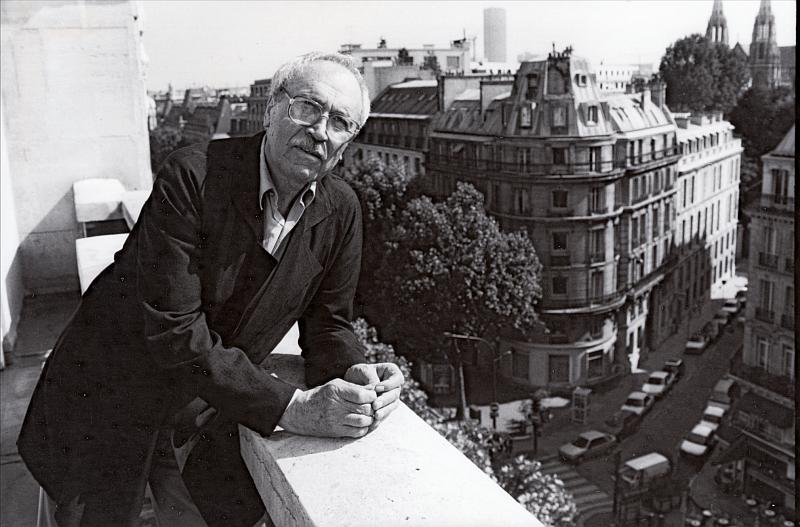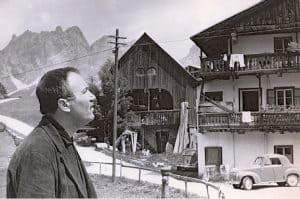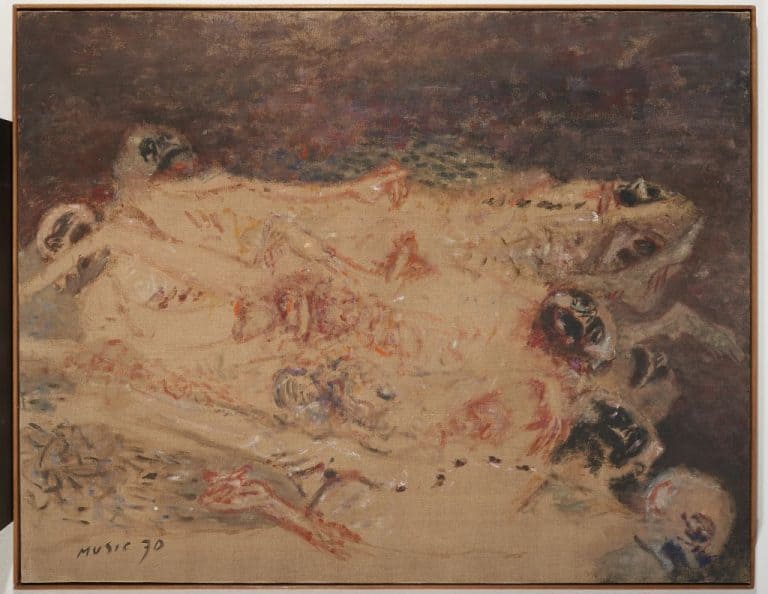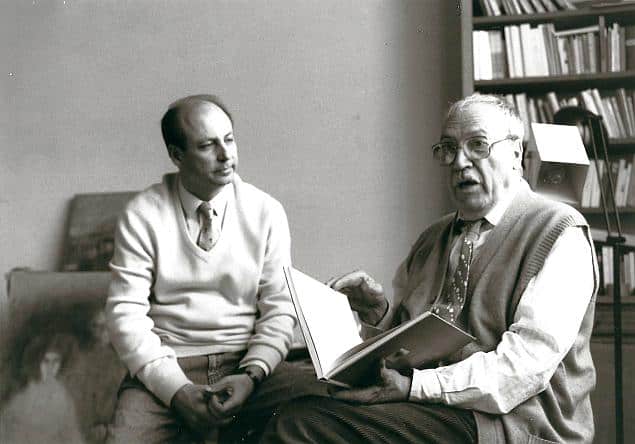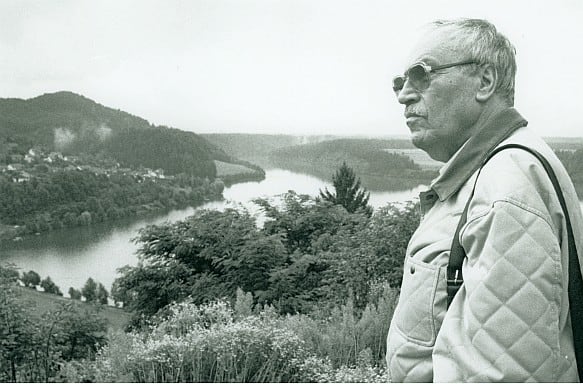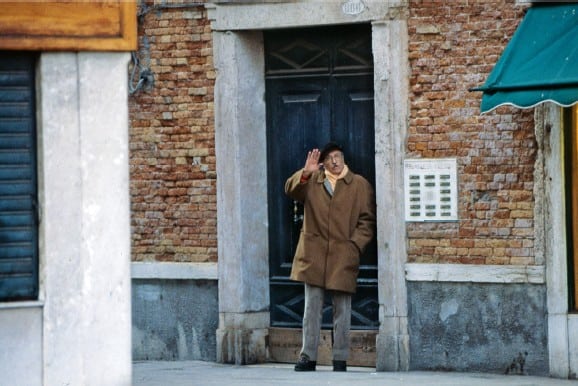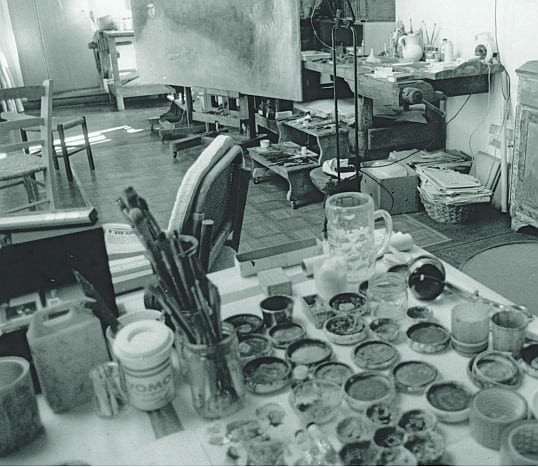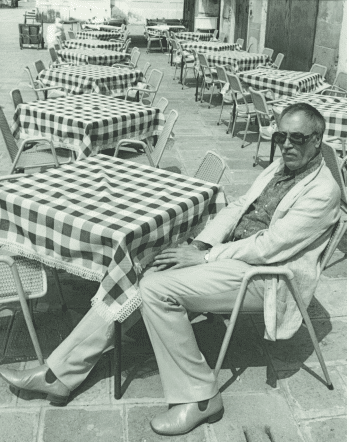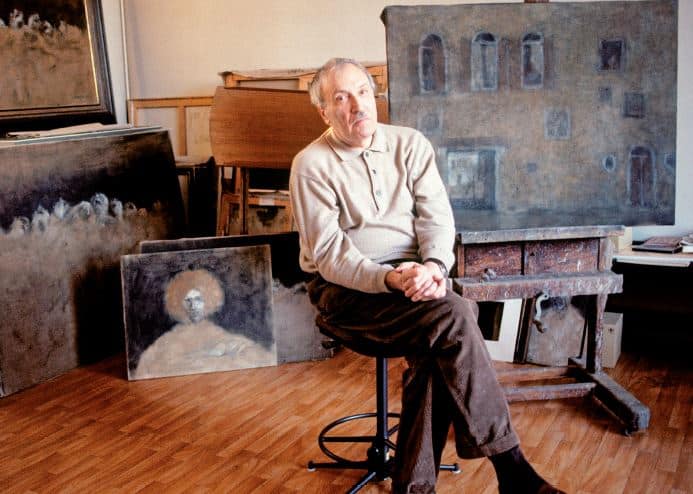From the collected works “Zoran Music” by Siegbert Metelko and Charlotte Hug. Supplemented by Siegbert Metelko in 2019.
1970-1971
The exhibition We Are Not the Last is repeated in Munich at the Haus der Kunst, in Brussels at the Palais des Beaux-Arts and in the Museum of Trier. Numerous paintings come in public collections. In Paris, the Center Georges Pompidou, the Musée d’Art Moderne of the City of Paris and the museums of Paris, Jerusalem, Venice, Copenhagen, Oslo, Hovikodden, etc.
1972-1976
Music is exhibited for the first time in a Parisian museum, on the occasion of Jacques Lassaigne’s retrospective at the Musée d’Art Moderne in Paris. In Ravenna he creates a 30-square-meter mosaic for the courtyard of the Hilton Hotel. In the south of France he draws cork oaks. This is the beginning of his series of
Plant motifs. In 1974, Giuseppe Mazzariol dedicates a personal exhibition in Venice to him in the Querini Stampalia Foundation.
1977
Great retrospective in the Mathildenhöhe, Darmstadt. The Museum of Basel hosts an exhibition of a dozen pictures from the period 1947-1951, as well as a major exhibition of the Sonia Henie-Niels Onstad Foundation in Hovikodden.
1980
Publication of the music monograph by Giuseppe Mazzariol and retrospective in the galleries of the Accademia in Venice.
1981-1982
Series Canale della Giudecca and Punta della Dogana. Music is named “Commandeur des Arts et Lettres” in Paris. Patti Cadby Birch buys twenty pictures of the series We are not the last ones as the foundation for a foundation.
1983-1984
Exhibition in the gallery Claude Bernard in Paris. Beginning of the cycle Interno di cattedrale. “Already in 1943 I was fascinated by the interior of San Marco in Venice. I made some sketches. Recently I resumed the motive and tried to recreate the deep silence, the mood of the cathedrals and their magnificent appearance. From the almost total darkness that surrounds us as we enter, vaguely illuminated forms gradually dissolve, “recalls Music.
The Venice Biennale devotes music to a hall. The well-known art enthusiast Sergio Grandini creates an album with twenty-six drawings of music, published by Giulio Topi in Lugano.
1986-1990
Retrospective at the Museum Jenisch in Vevey and the Museum of Bellinzona. Personal exhibition in the Galerie Welz in Salzburg. Series of self-portraits. First exhibitions in the gallery Contini in Mestre and Asiago. Exhibition of works on paper in the Center Georges Pompidou. Personal exhibition in the gallery Bergamini in Milan. Music produces the night views of Paris, Citta, and begins a new cycle: self-portraits and ateliers exhibited in the Galerie Krugier-Ditesheim Art Contemporain in Geneva.
1990-1991
Touring exhibition: Klagenfurt (A) – Ljubljana (SLO) – Zagreb (HR). (Organization and selection Siegbert Metelko) A comprehensive catalog appears.
1991
Music is appointed Officer of the Legion of Honor and continues the cycle of great images while working intensively on drawings and pastel paintings.
1992-1993
Exhibition in the Graphic Collection Albertina, Vienna (AT, organization and selection Siegbert Metelko). An extensive catalog appears. Galleria Contini, Cortina (I).
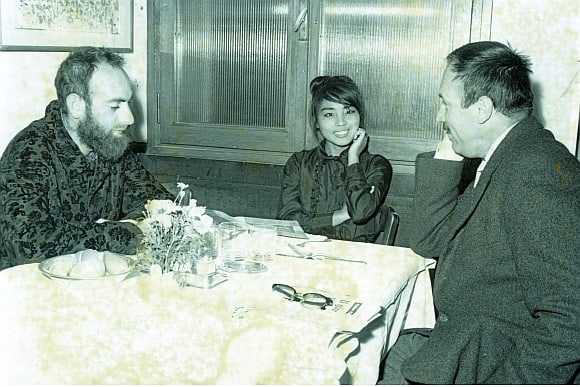
1994
Exhibition at the Bancaixa Cultural Center in Valencia. Exhibition in the gallery Contini in Venice.
1995
We are not the last, exhibition at the Museum Goupil in Bordeaux. Great retrospective at the Grand Palais, RMN, Paris. Musee des Beaux-Arts in Caen: Le Temps des Ténèbres, Zoran Music, Miklos Bokor. Bavarian Academy of Fine Arts, Munich: Zoran Music, The late years. Catholic Academy in Bavaria, Munich: We are not the last. Musée Picasso, Antibes: Zoran Music, An Art of Meta-Memory ».
1996
Exhibition in the Gallery Jorge Mara in Madrid.
1997
Morwan Hoss Gallery, Paris: Zoran Music, Corps et Visages. Exhibition in the Schirn-Kunsthalle in Frankfurt.
1998
Exhibition Gli acquerelli veneziani, 1947-1949, in the Museum Morandi, Bologna. Exhibition Inchiostri in the gallery Contini in Venice-Mestre.
1999
Exhibition at Kunsthaus Klosterneuburg, Essl Collection. Museum Morandi, Bologna: La donazione Zoran Music. Exhibition at Morwan Hoss Gallery, Paris: Une vie, deux oeuvres. Exhibition in Bilbao, Foundation Bilbao Bizkaia Kutxa, Zoran Music, Ultima Obra. Vienna, Galerie Chobot, Zoran Music, paper works. Braunschweig, Gallery Schmücking, Zoran Music, paintings, watercolors, gouaches, drawings and graphics. Ljubljana, Moderna Galerija, exhibition for the 90th birthday of Zoran Music.
2000
Museum Cognac-Jay, Paris: Venice in the work of Zoran Musics. Norwich, Sainsbury Center for Visual Arts, University of East Anglia, Zoran Music. London, Estorick Collection of Modern Italian Art, Zoran Music. Cologne, Galerie Stefan Röpke, Zoran Music, May 5 – June 3.
2001
Geneva, Gallery Jan Krugier, Ditesheim & Cie, Zoran Music, works from 1947 to 2001. Music Foundation at the Valencian Institute of Modern Art (IVAM), Valencia. Trieste, Galleria Torbandena, Zoran Music We are not the last, works on canvas and paper.
2002
New York, The Jewish Museum, An Artist Response to Evil, “We Are Not the Last,” The Everett B. Birch Foundation, March-June.
2003
Gorizia, Musei Provinciali, Palazzo Attems, Music. Exhibition at the Museum of Marseilles, We are not the last (paintings 1970-1989, photographs). Museum Jenisch, Vevey, Zoran Music, Retrospective.
2005
On May 25, 2005, Zoran Mušič dies in the Palazzo Balbi Valier on Dorsoduro in Venice and is buried in the cemetery island of San Michele.
2005
Gorizia, Biblioteca Statale Isontina, Music, Piccole Carte (150 reproductions). Exhibition in the gallery Torbandena, Trieste, Zoran Music, operas scelte (paintings, drawings, graphics).
2006
Venice, Gallery A + A, Zoran Music. Museum Morandi, Dal buio, Ricordo of Zoran Music (paintings, drawings, prints). Gallery Zala, Ljubljana, Zoran Music (44 reproductions). Schloss Gottorf Schleswig, Music from the collection Grosshaus (drawings, watercolors, graphics).
2007
Dozza, Bologna, Rocca Sforzesca, exhibition of works on paper
2008
Exhibition in Barcelona, Fundacio Caixa Catalunya, La Pedrera, Zoran Music, De Dachau a Venecia. (125 works: paintings, drawings 1935-2001). Zala Gallery, Ljubljana, Zoran Music (72 works: engravings, lithographs).
2009-2010
To mark the centenary of his 100th birthday, several exhibitions will be shown in Ljubljana, Slovenia (Zala Gallery, National Gallery of Slovenia and TR3 Gallery). In addition, a number of brochures, books and catalogs are published (see also bibliography, monograph).
Venezia, Palazzo Franchetti, Zoran Music. Estreme figure Istituto Veneto di Scienze, Lettere ed Arti.
2011-2012
Legnano, Palazzo Leone da Perego, publication: “Se questo è un uomo”.
Venezia, Madonna dell’Orto (Cannaregio)
2017
Neuchatel, Dietesheim & Maffei Fine Art, Homage to Zoran Music 23.4.-18.6.2018
2018
Milano, Gallery Lorenzelli Arte, 25.1.2018-10.3.2018
Bologna, Galleria d`arte Maggiore, 18.11. 2017-15.11.2018
Vienna, Leopold Museum 12.4.-10.8.2018: “ZORAN MUŠIČ Poetry of Silence. On the basis of more than 160 loans from several international collections, all the creative phases of the silent loner are presented. The exhibition is also a contribution of the Leopold Museum to the commemorative year 2018. In memory of the momentous events about 80 years ago Ida Cadorin Barbarigo, who died at the age of 92 Painter and wife of the artist, generously presented a few months before her death on January 15, 2018 several outstanding paintings from her possession – the studio Zoran Mušič – for the exhibition in the Leopold Museum.
Venice, Palazzo Fortuny Exhibition From 24 March to 23 July 2018 The exhibition presents works by Zoran Music, in the center of which, after a long period of preparation, the space from the Villa Dornacher in Zollikon, created between 1947 and 1950 by Zoran Music, is finally and for the first time publicly visited can.
Venezia, Galerie BORDAS, 25. March to 9.Maggio 2018, Grafica originale-Libri illustrari.
2019
Vienna, W & K Palais Schönborn-Batthyány, W & K and Gallery Magnet Zoran Music – Painting | Joannis Avramidis – Sculpture, May 22 – September 13, 2019, catalog “Fascination of Painting, Gallery Magnet, curated by Siegbert Metelko
Ljubljana, Gallery Novak, 24.0kt. – 9.Nov.2019, Zoran Music, oil paintings and works on paper from Slovenian, Italian, Swiss and Austrian collections, catalog with illustrations.
